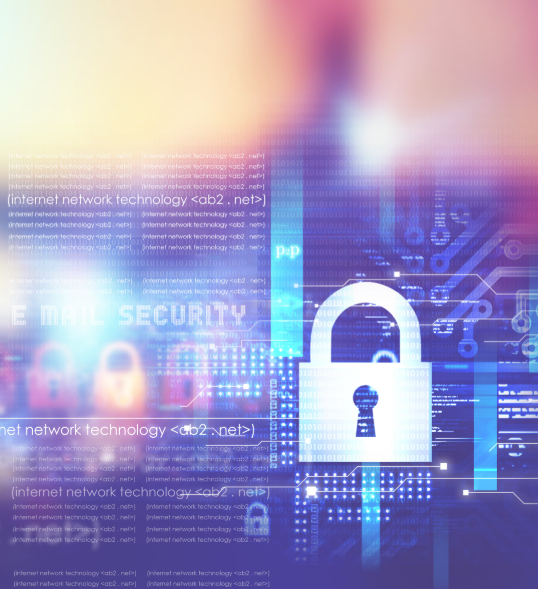Building Cybersecurity Resilience: Why Understanding Your Risk Appetite Is Crucial for SEC Compliance
- 130 Views
- admin
- 12/11/2024
- Cybersecurity
The U.S. Securities and Exchange Commission (SEC) has made one thing very clear—cybersecurity is now a boardroom priority. With heightened scrutiny and new regulatory expectations, every publicly traded company must take a hard look at how it defines, manages, and communicates its cybersecurity posture. At the heart of this transformation lies one pivotal question: What level of cyber risk are you willing to accept?
The SEC’s Shift Toward Cyber Transparency
Recent SEC rules mandate timely and detailed disclosure of material cyber incidents. Since the end of 2023, public companies have been required to track and disclose significant cyber breaches and explain their approach to risk management. Starting in 2025, businesses must also be ready to present their overall cybersecurity framework and maturity in annual filings.
Key reporting forms now include:
- Form 10-K: Outlines your organization’s overall cyber strategy, program details, and board oversight.
- Form 8-K: Requires timely disclosure of specific incidents, including the nature of the breach, data affected, and projected impact.
These changes highlight the SEC’s focus on transparency and investor protection. Cases like the SolarWinds breach have shown that failure to address cyber risks can carry not only technical consequences, but serious legal and reputational fallout.
Understanding the Three Pillars of Compliance
To meet these expectations, companies must align with three core capabilities:
1. Incident Response and Disclosure
Organizations need strong mechanisms to detect, respond to, and report incidents in real time. This involves setting thresholds for materiality and ensuring reporting is both prompt and comprehensive.
2. Cyber Risk Management and Integration
Cybersecurity can no longer exist in a vacuum. It must be woven into your company’s overall business operations, including budgeting, planning, and stakeholder engagement. Determining materiality, assessing data breach impacts, and integrating security into strategic goals is key.
3. Governance and Oversight
Perhaps the most important element is how cybersecurity is governed. Board involvement is now expected—not optional. Oversight, decision-making, and defining acceptable risk all sit at the top.
Risk Appetite: The Cornerstone of Cyber Strategy
A company’s cyber risk appetite defines the level of exposure it is willing to tolerate in pursuit of its goals. Unlike risk capacity—which represents the maximum risk a business can handle—risk appetite is a more measured threshold, tailored to the organization’s comfort level and long-term strategy.
Establishing a clear risk appetite helps leaders make informed choices and align resources effectively. It also serves as a foundational tool for determining which incidents are material enough to warrant disclosure.
Who Owns Cyber Risk Appetite?
The Board of Directors is ultimately responsible for setting and approving the risk appetite. While operational teams may implement the strategy, the board must ensure that the company is not accepting risk levels that could endanger stakeholders or business viability. Fiduciary duty demands active participation and accountability from board members.
Building a Risk Appetite Framework
Establishing a functioning risk appetite program involves several key steps:
- Align With Corporate Strategy: Risk thresholds should reflect the organization’s goals, industry, and values.
- Define Tolerance Levels: Set measurable limits for different departments and integrate them into governance policies.
- Enable Continuous Monitoring: Regular reviews and adjustments are necessary as the threat landscape evolves.
- Integrate With ERM: The risk appetite must be embedded in the company’s enterprise risk management (ERM) system to enable balanced decision-making.
Example Statement:
“We aim to maintain a less than 5% chance over the next 12 months of a breach that exposes 1 million or more personally identifiable records.”
This type of statement is effective when it is specific, quantifiable, time-bound, and agreed upon across business units.
Getting the Board Involved
For companies to thrive under the SEC’s new framework, board-level engagement is non-negotiable. Cybersecurity should be a standing item on every board agenda.
Steps to Elevate Board Engagement:
- Educate Board Members: Provide regular training on cyber threats and regulatory duties.
- Foster Direct Communication: Ensure board members have open lines to the CISO and CIO—not just the CEO.
- Report Consistently: Deliver clear, concise, and actionable updates on risk posture and incident response readiness.
- Approve the Risk Appetite: Formalize the board’s commitment by having them validate the company’s cyber risk tolerance.
- Conduct Simulations: Use tabletop exercises to prepare for real-world incidents and assess readiness.
- Hire for Expertise: Consider bringing cybersecurity specialists onto the board for deeper insights and guidance.
Cybersecurity Is No Longer Optional
The SEC’s approach signals a larger shift: cybersecurity is no longer a niche IT concern—it is a business continuity and investor trust issue. Companies must take ownership of their cyber posture by formalizing risk tolerance, engaging leadership, and embedding security into strategy.
Final Thoughts
- Compliance Is Here: By 2025, every public company must be ready to disclose both incidents and the state of its cybersecurity program.
- Risk Appetite Is Central: A well-defined appetite for risk anchors your entire compliance framework.
- Leadership Matters: Active board involvement is critical to aligning cybersecurity with corporate governance.
- Materiality Becomes Clearer: Understanding your risk limits simplifies the process of evaluating incident severity.
- Culture Counts: Empower employees to integrate risk thinking into daily decisions.
Proactively shaping your cybersecurity posture today ensures resilience tomorrow. Don’t wait for a crisis to define your stance—start setting those boundaries now.
Recent Posts
- How AI is Revolutionizing Architectural Design: A Look at Tools, Trends, and the Future
- Streamlining Cyber Risk Assessments Through Automation
- Understanding the Difference Between Blockchain and Distributed Ledger Technology
- Is Bitcoin Mining Still a Viable Venture in 2025?
- Exploring AI: Unveiling Possibilities, Challenges, and Future Implications

